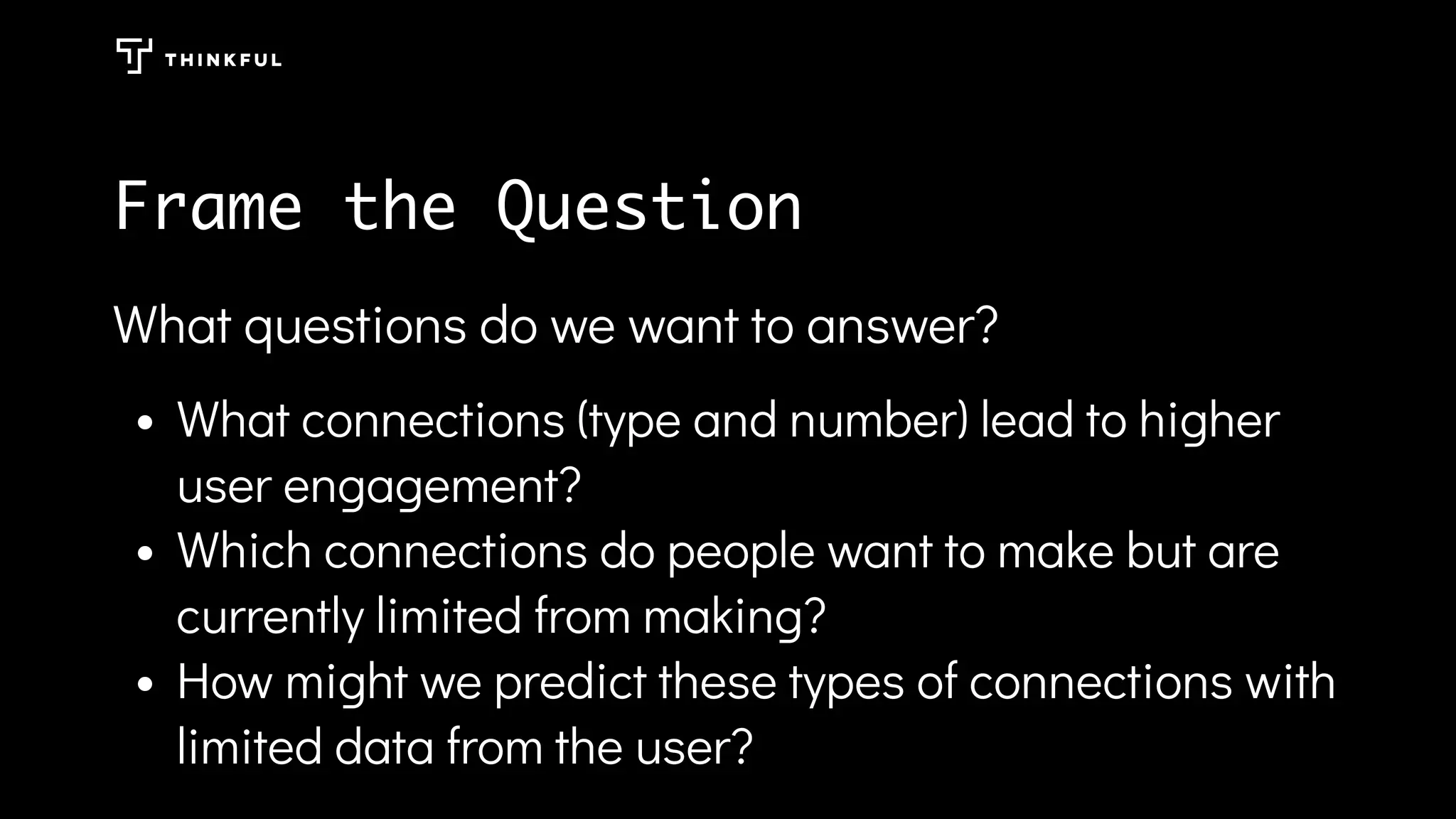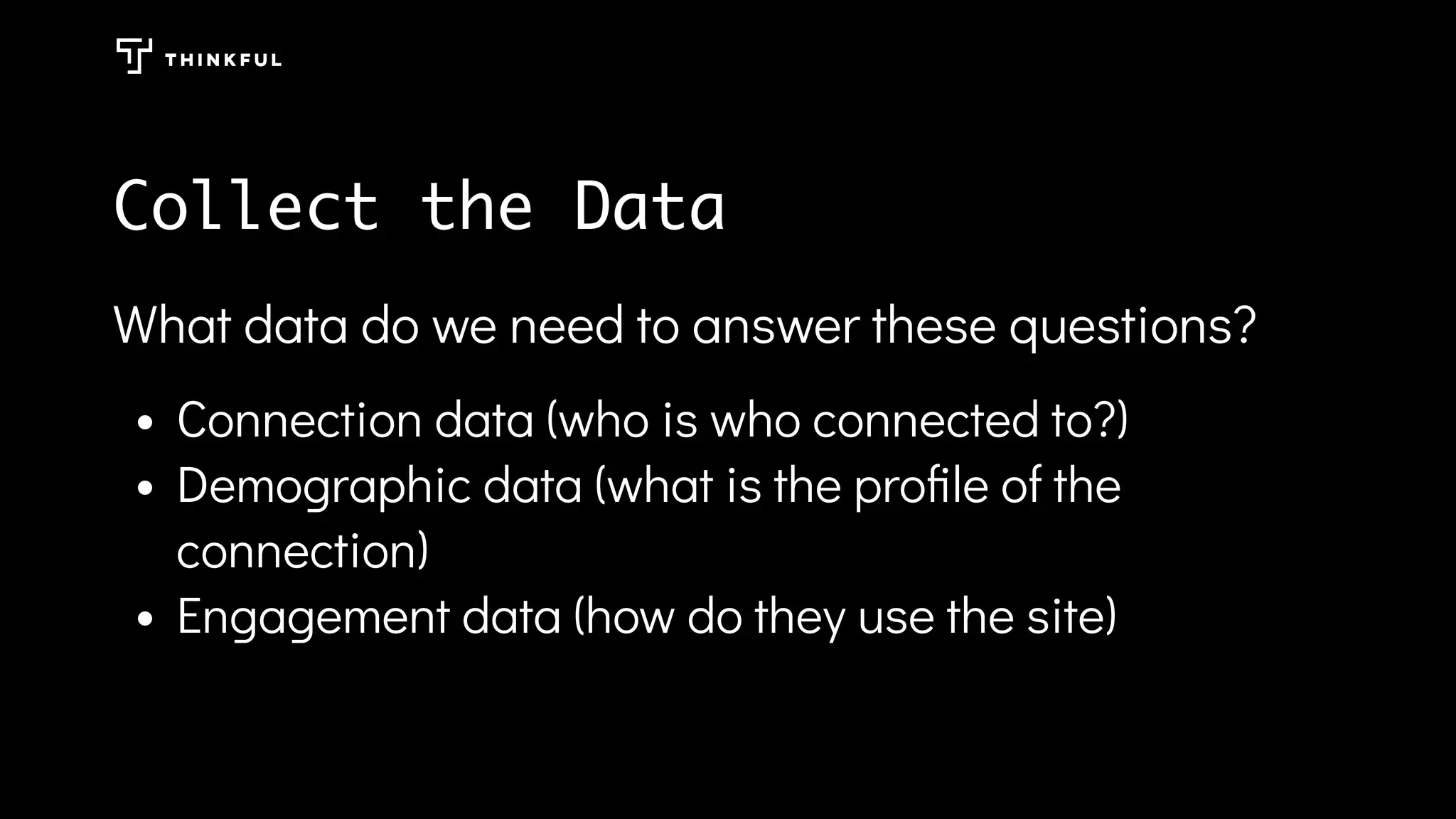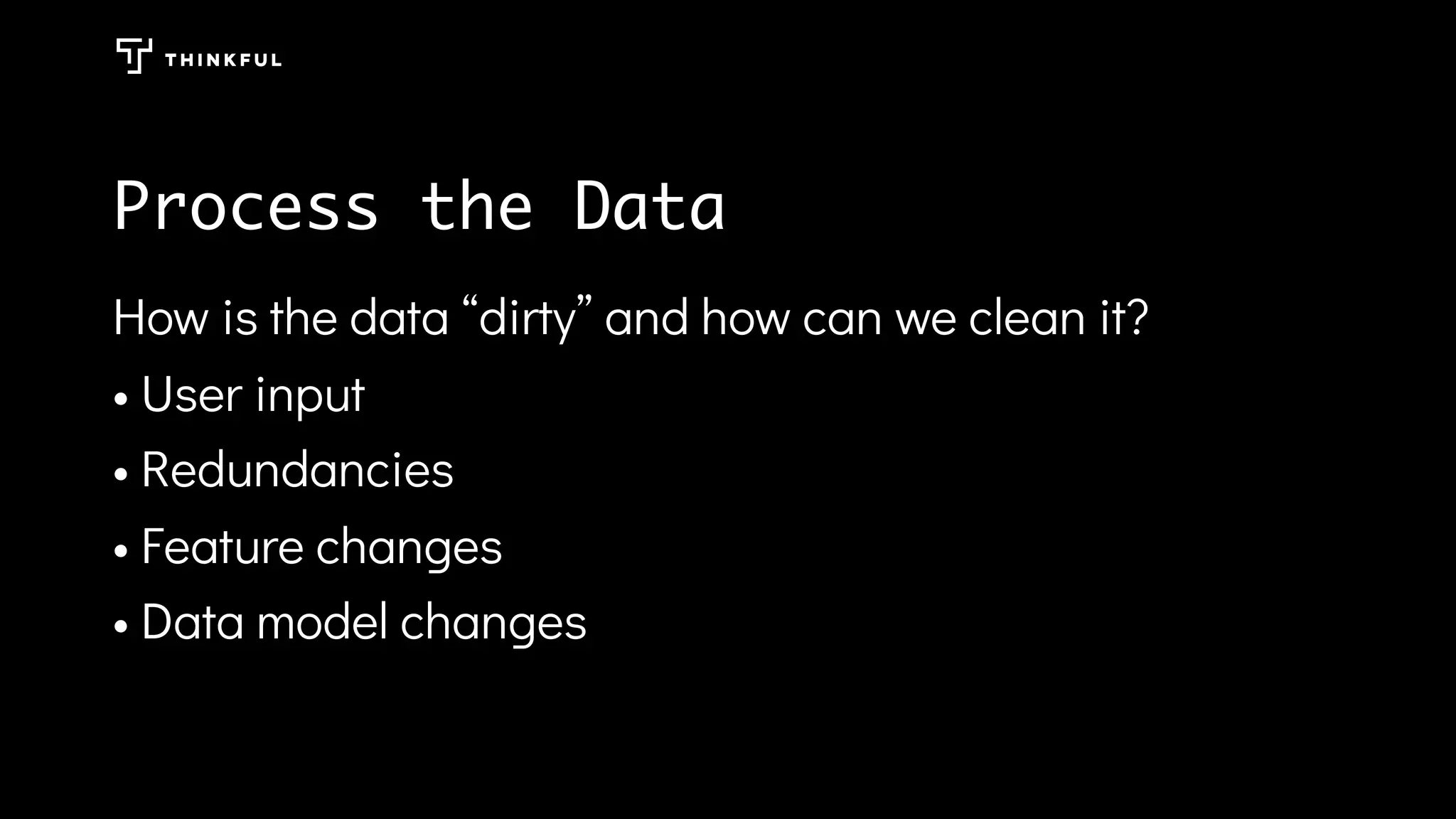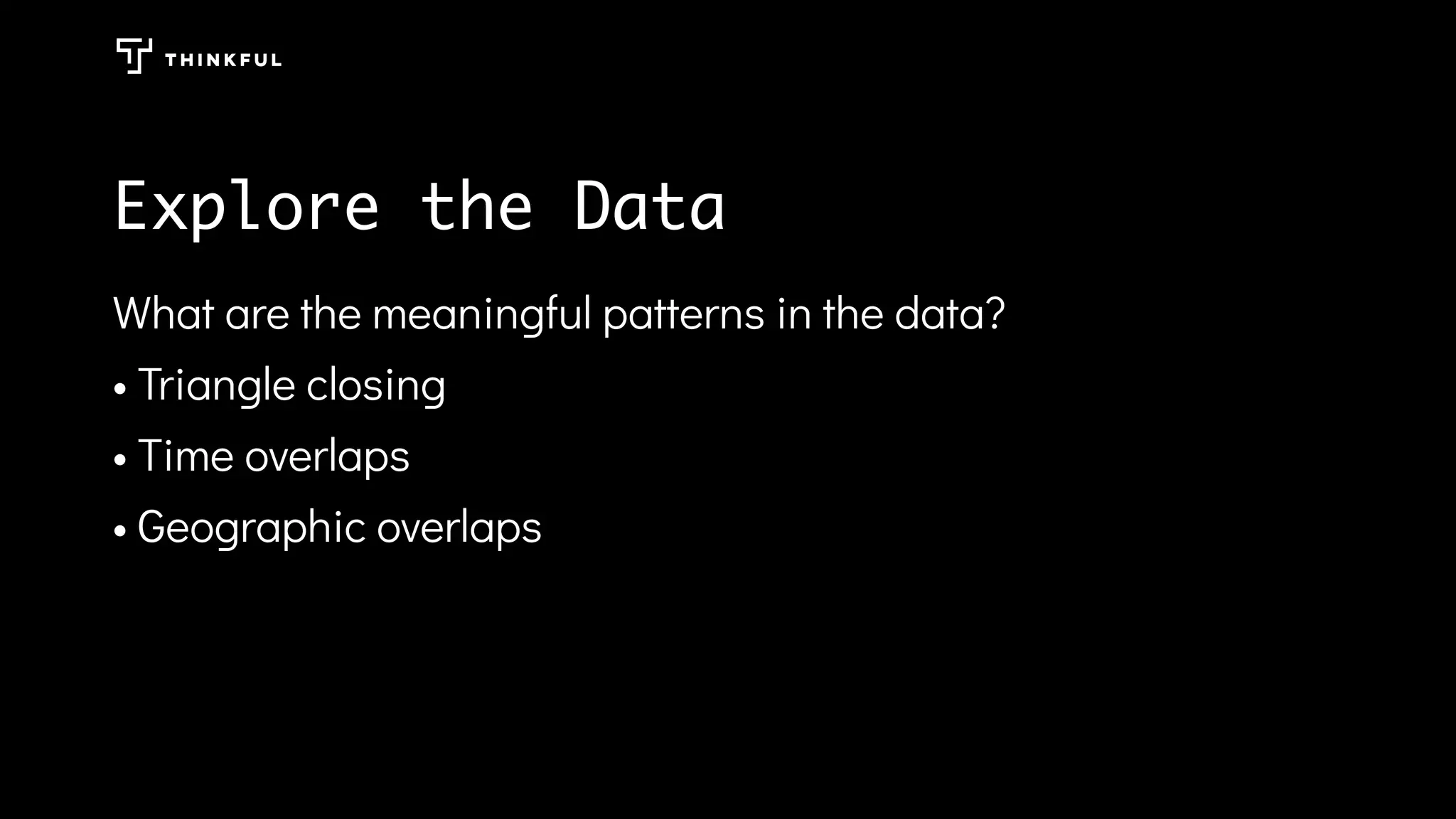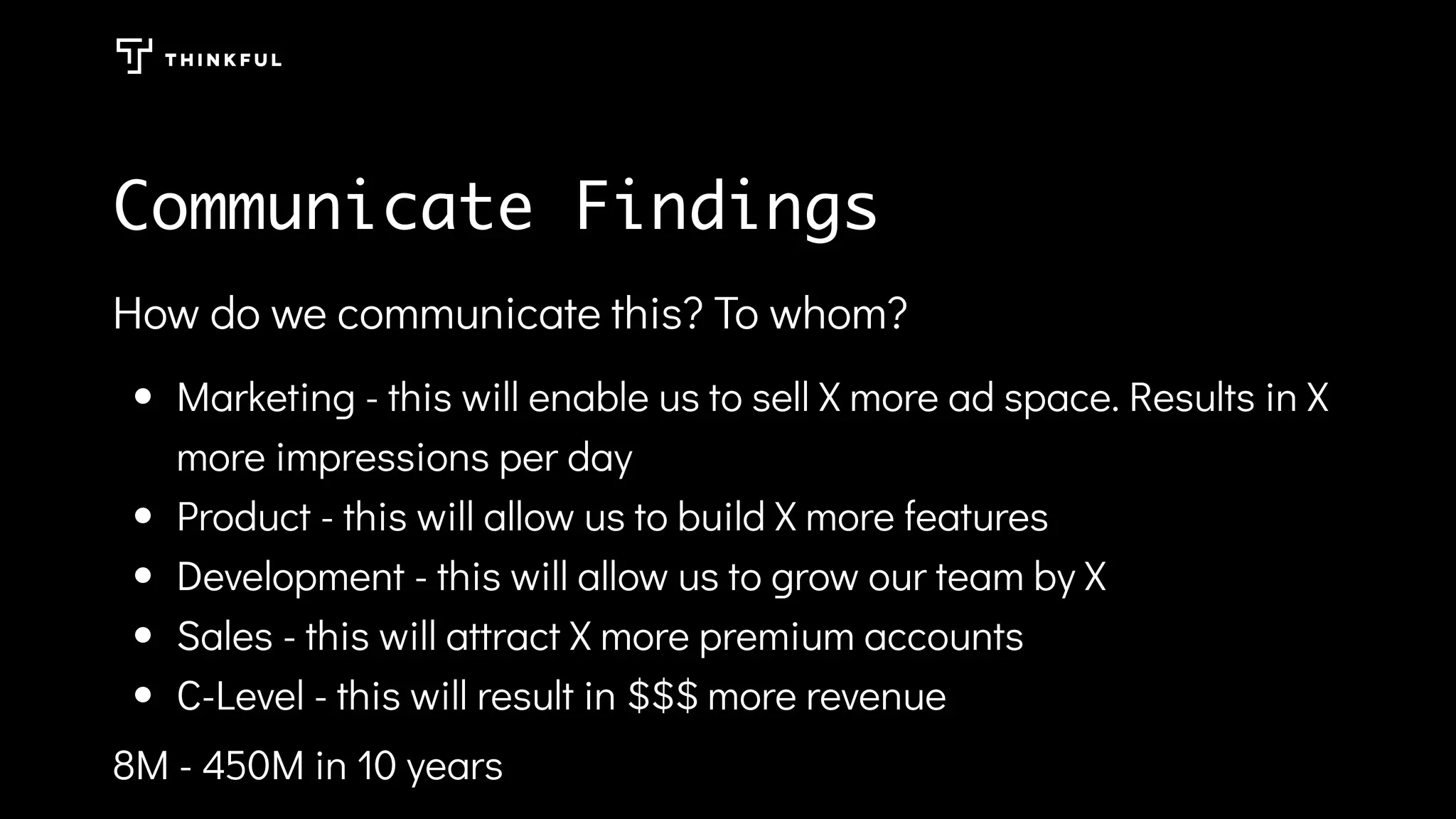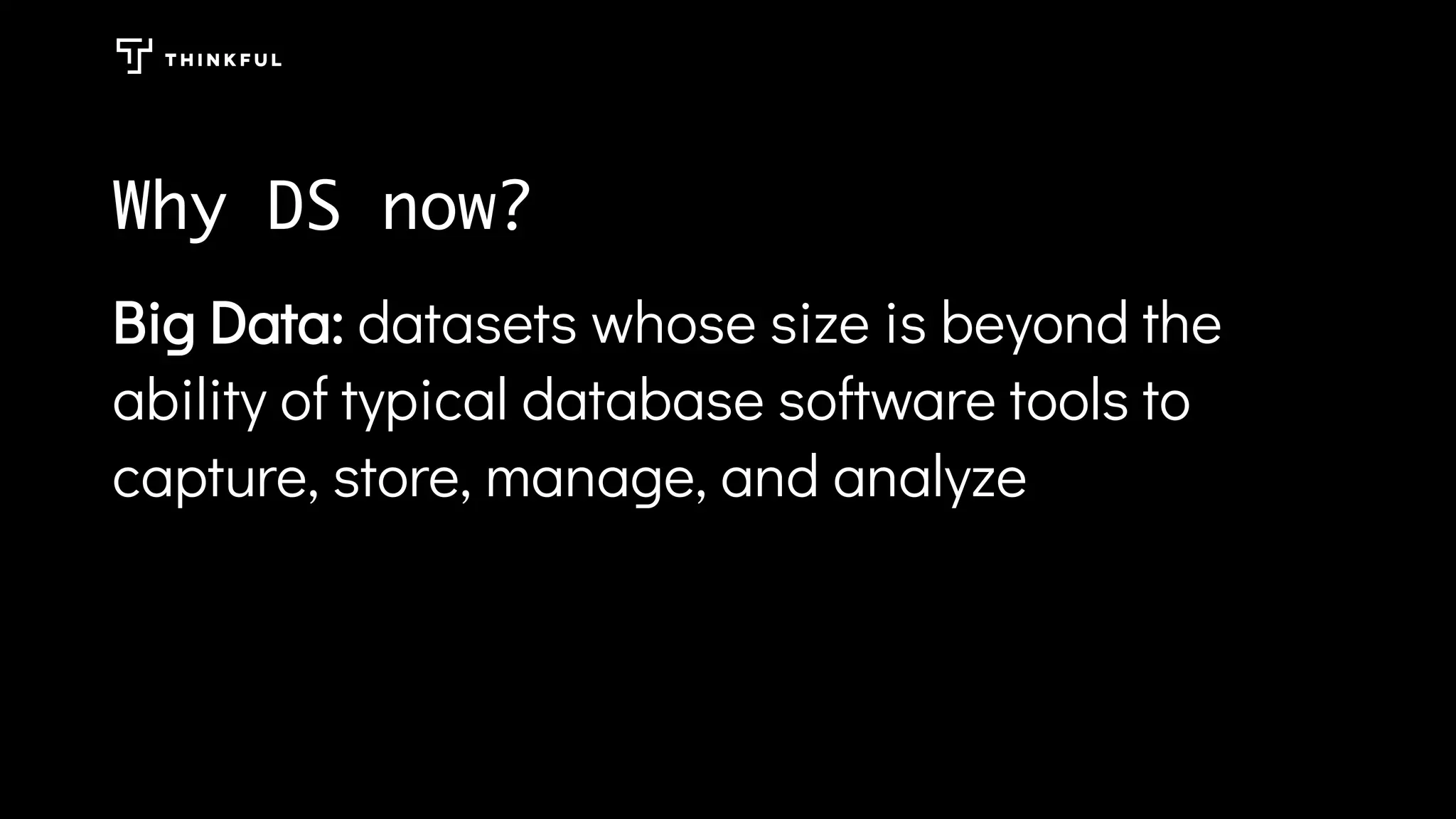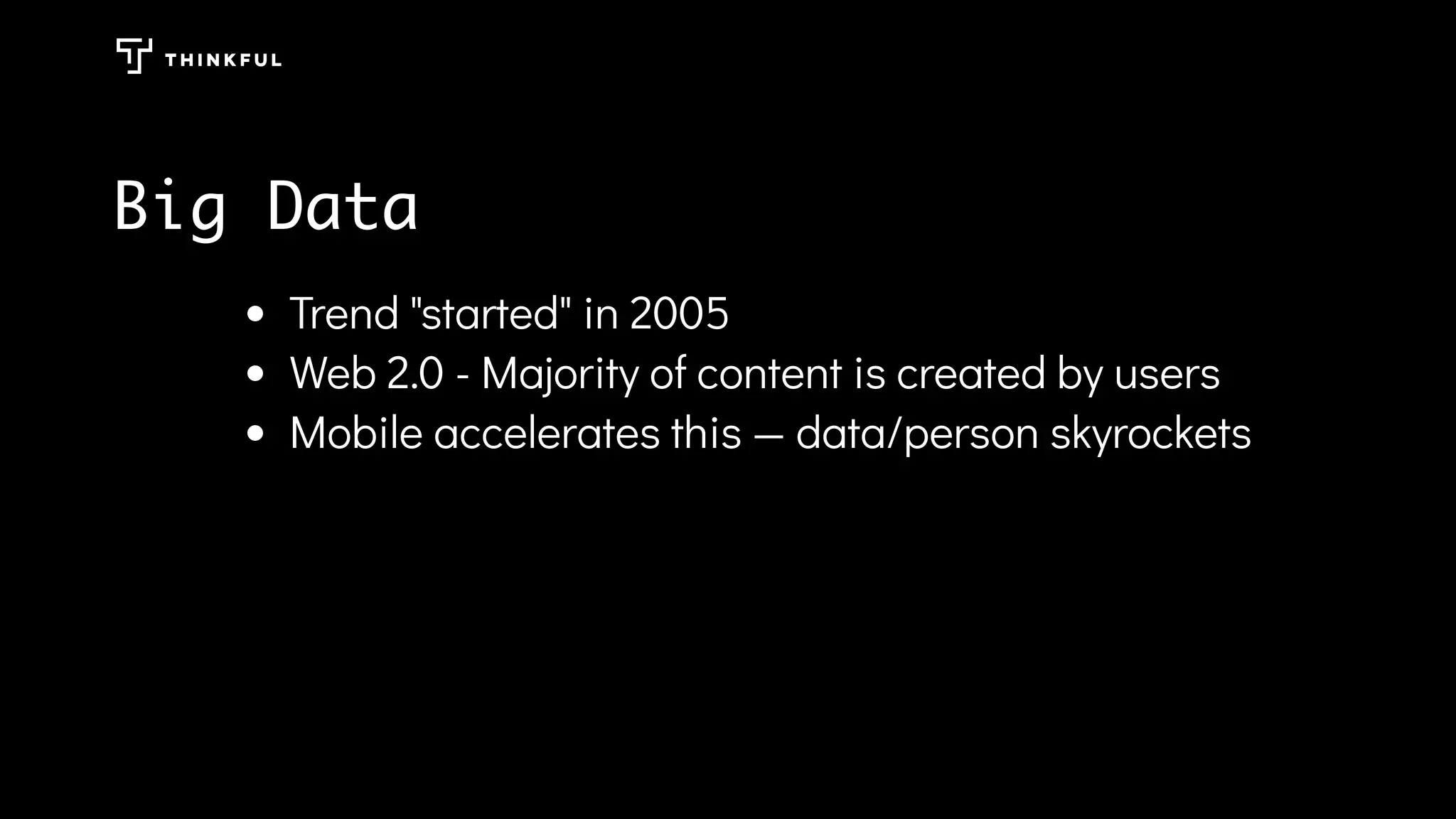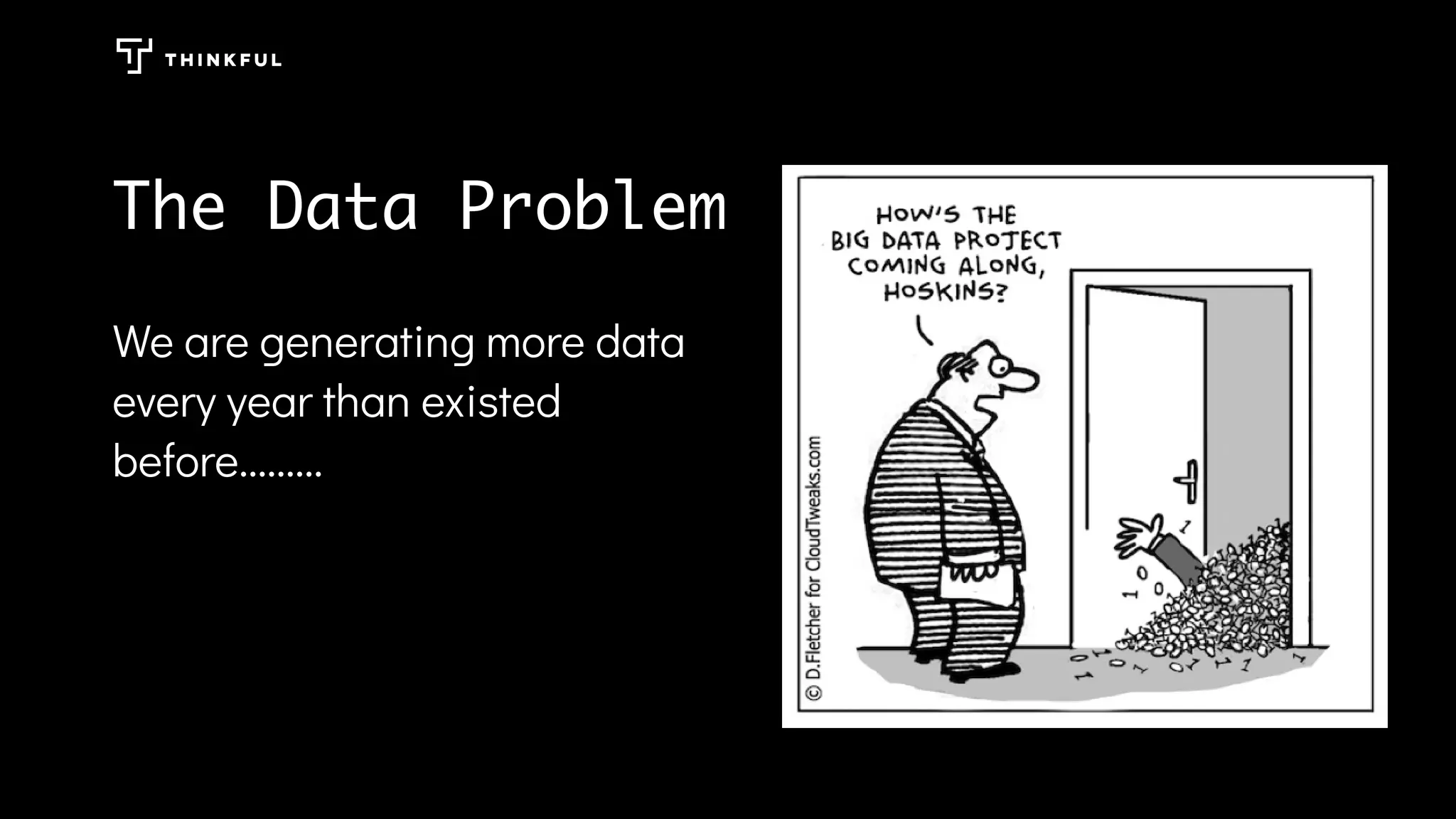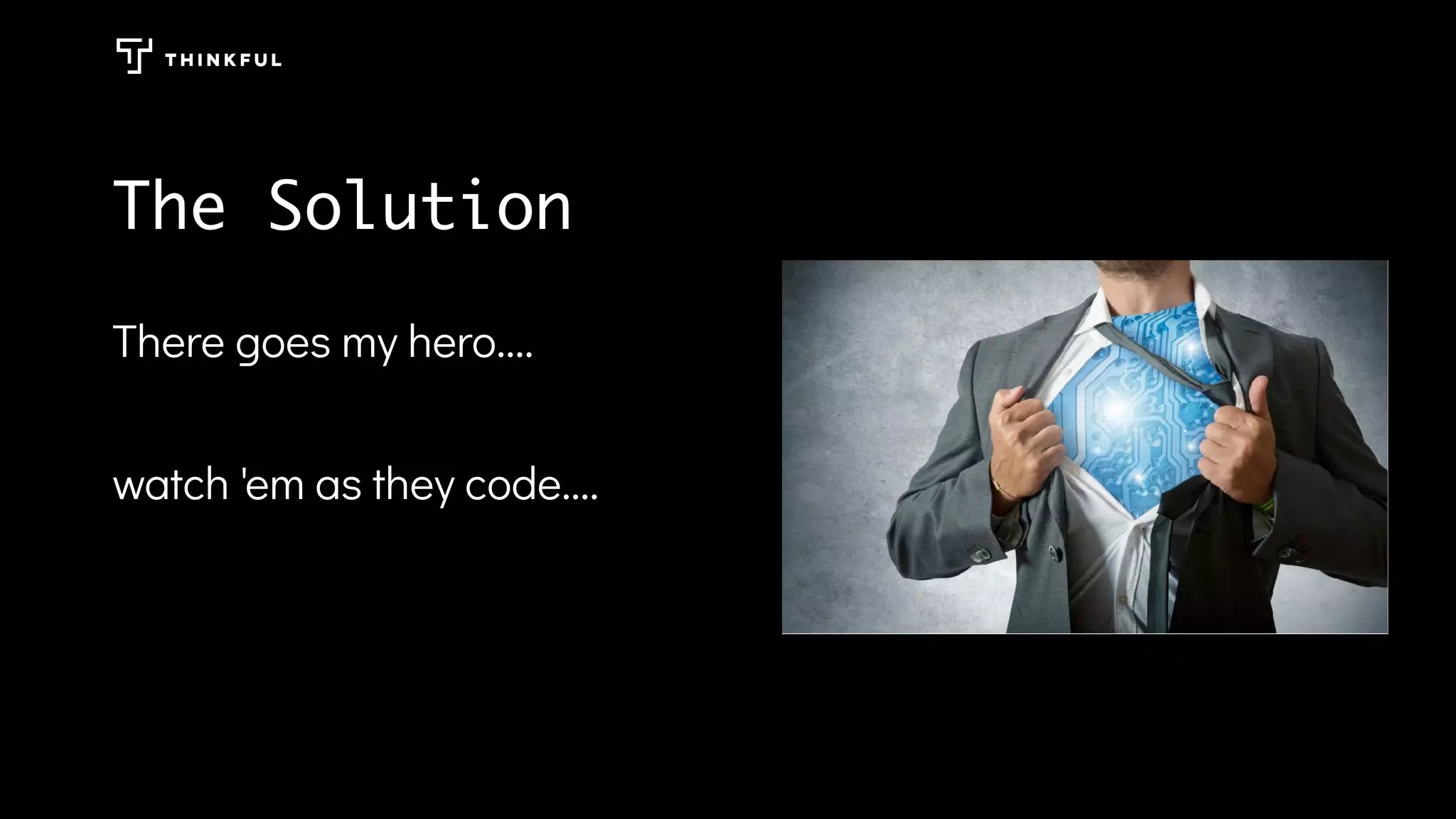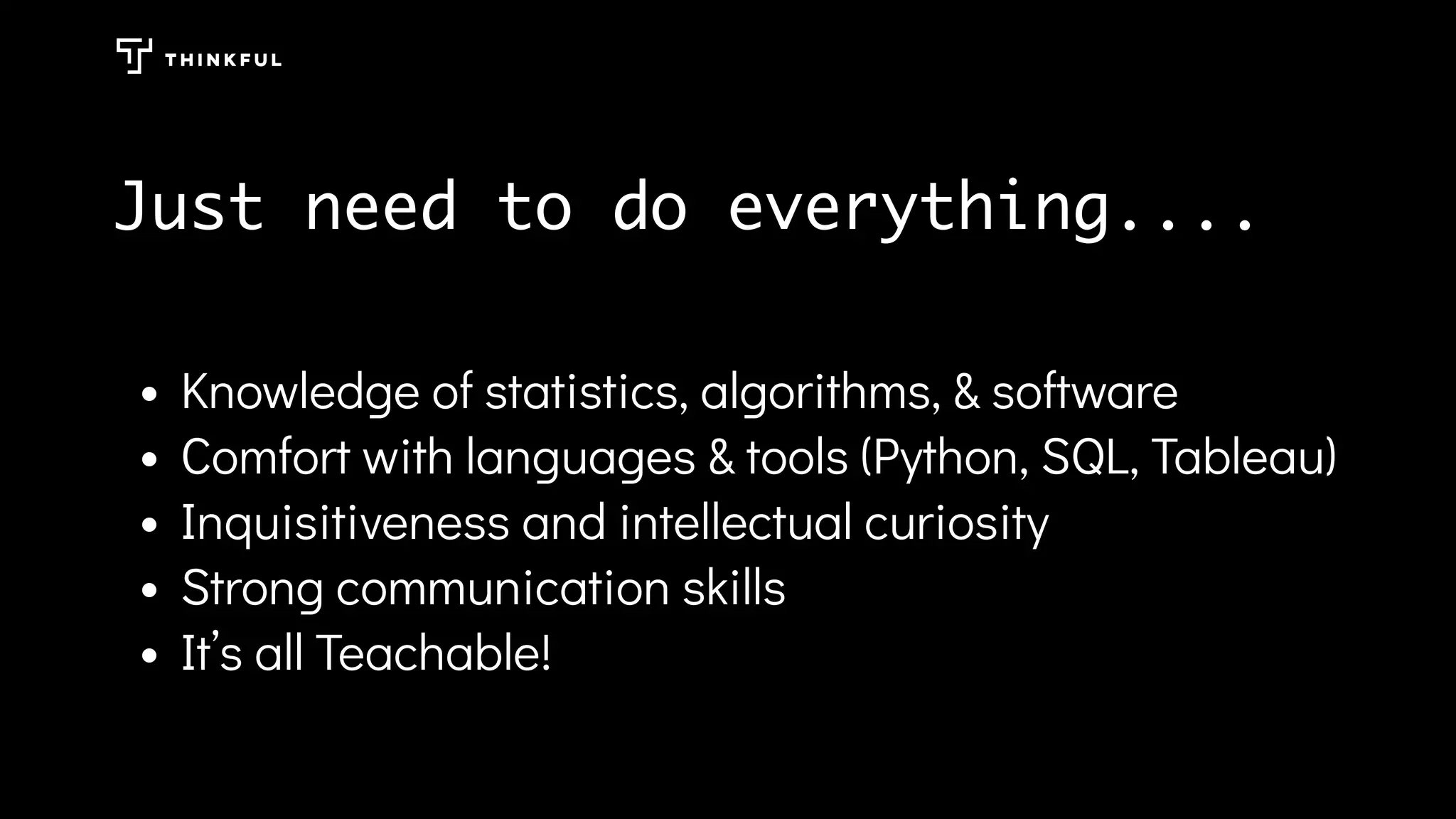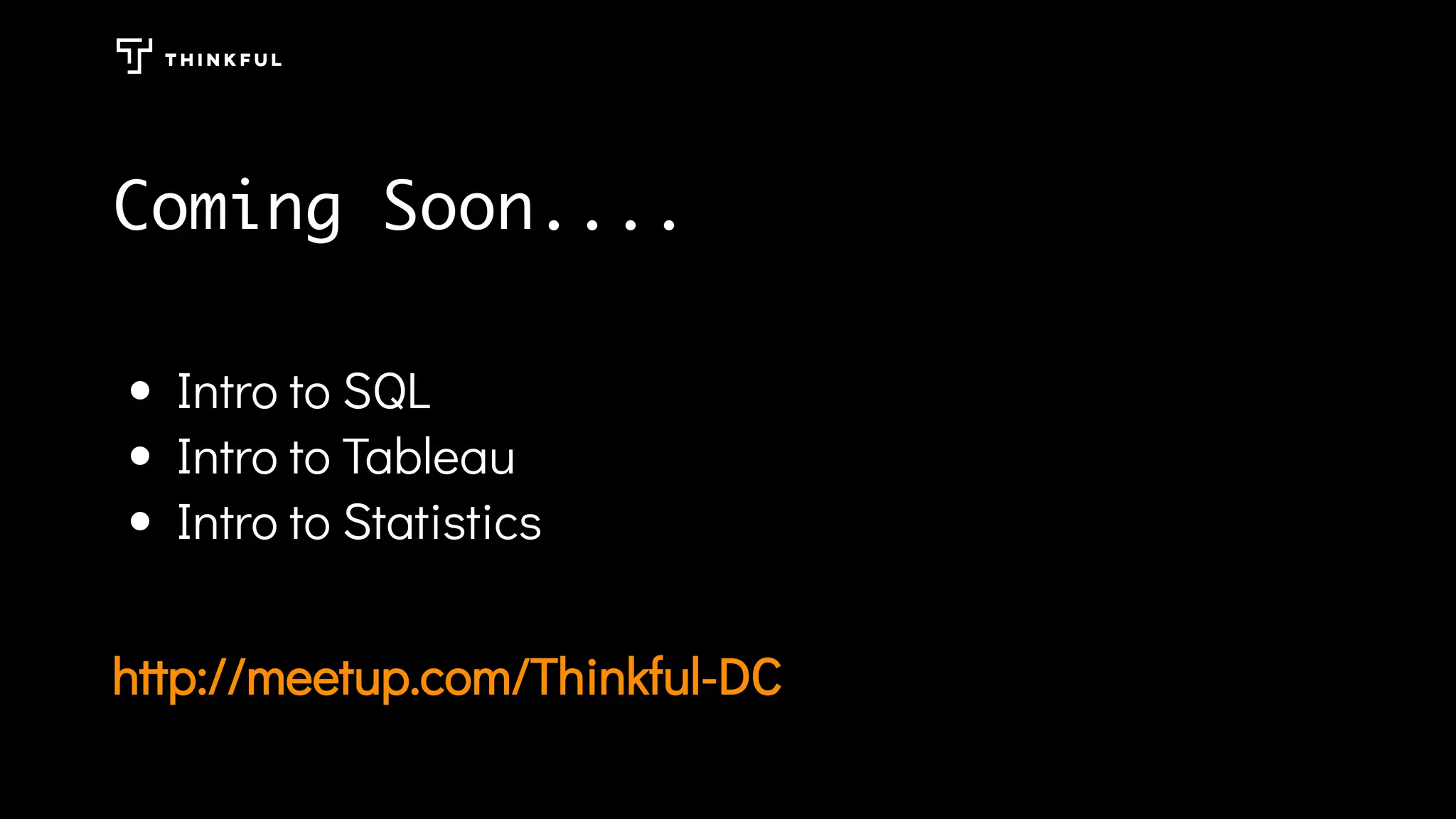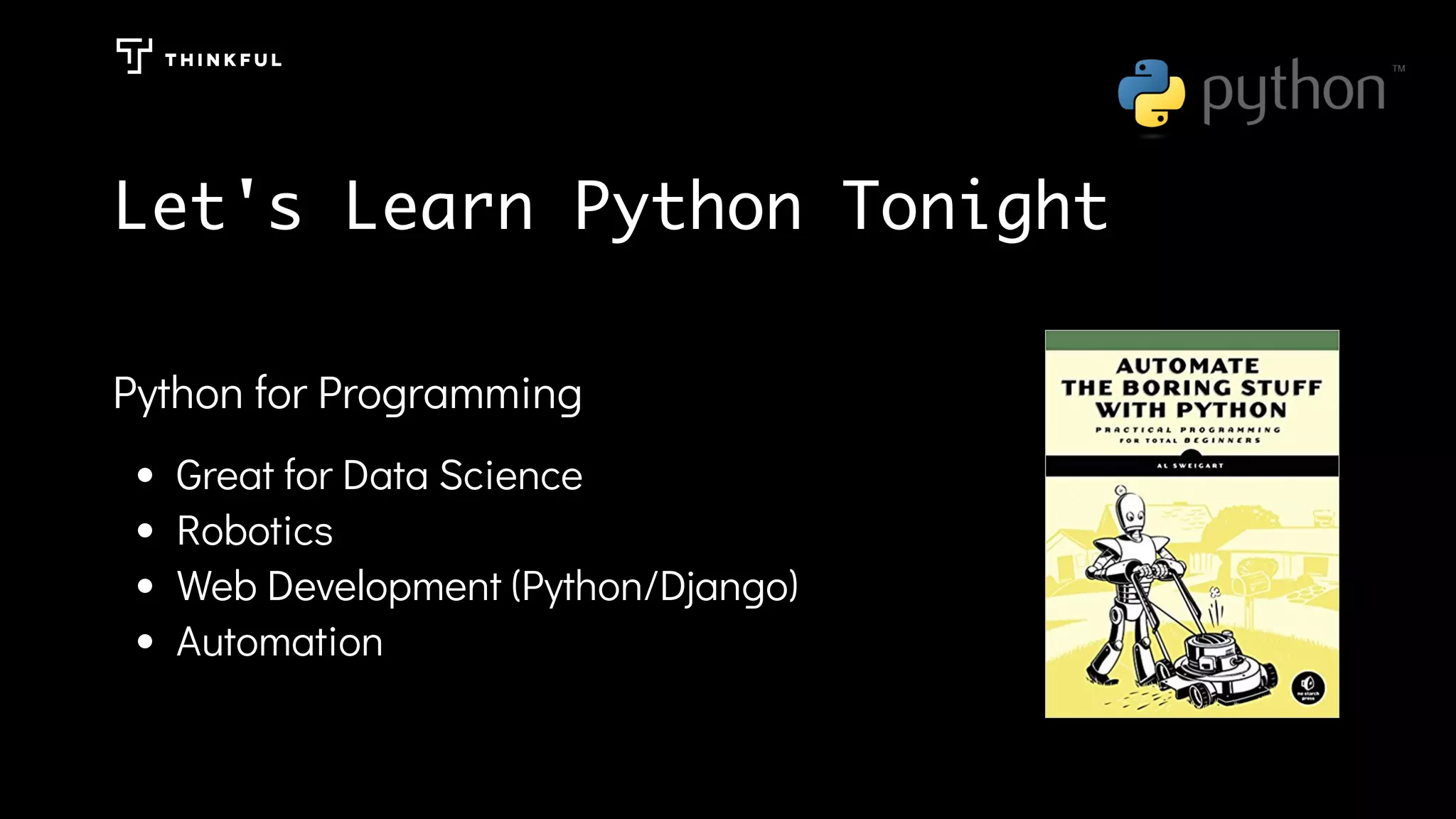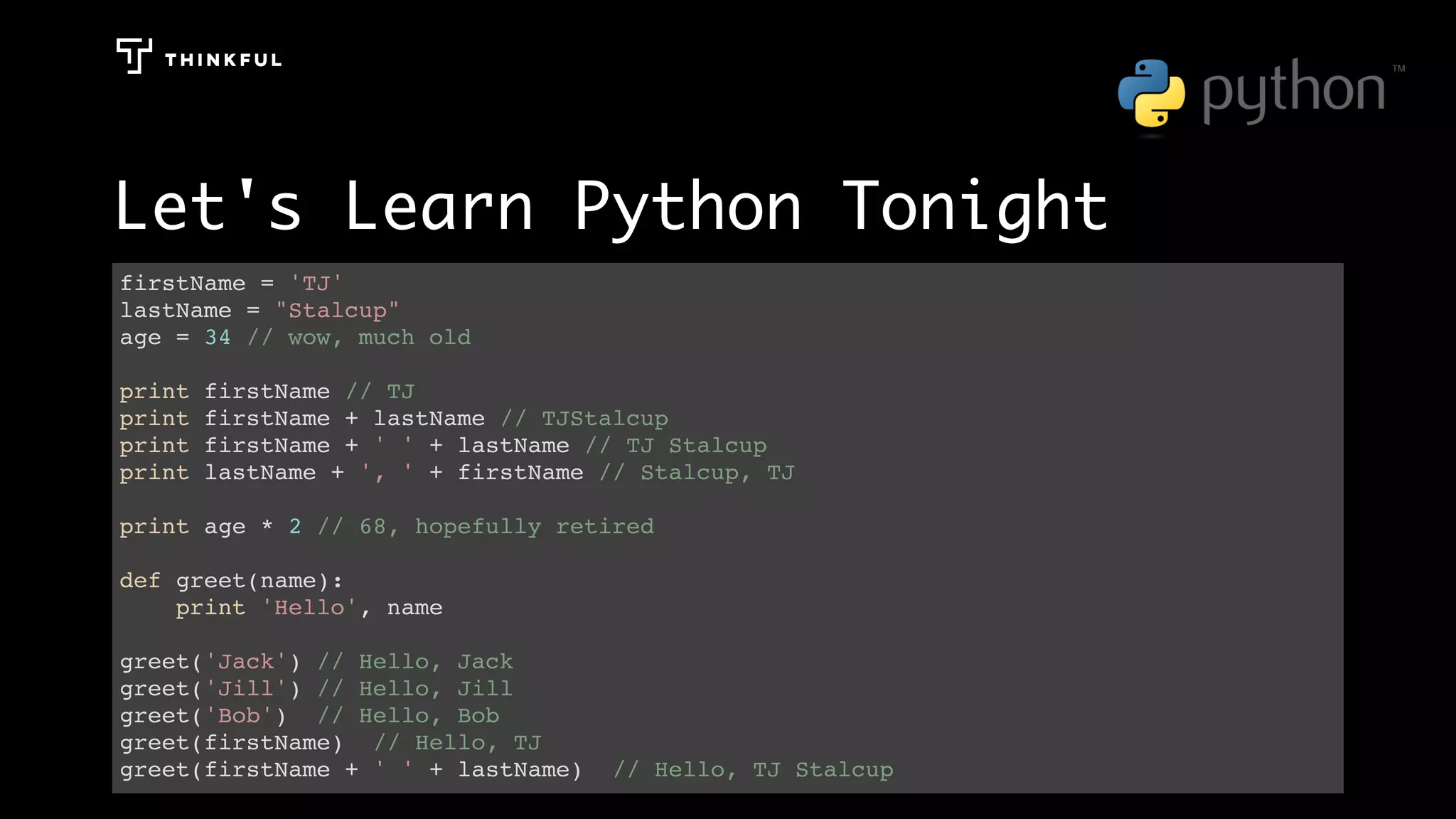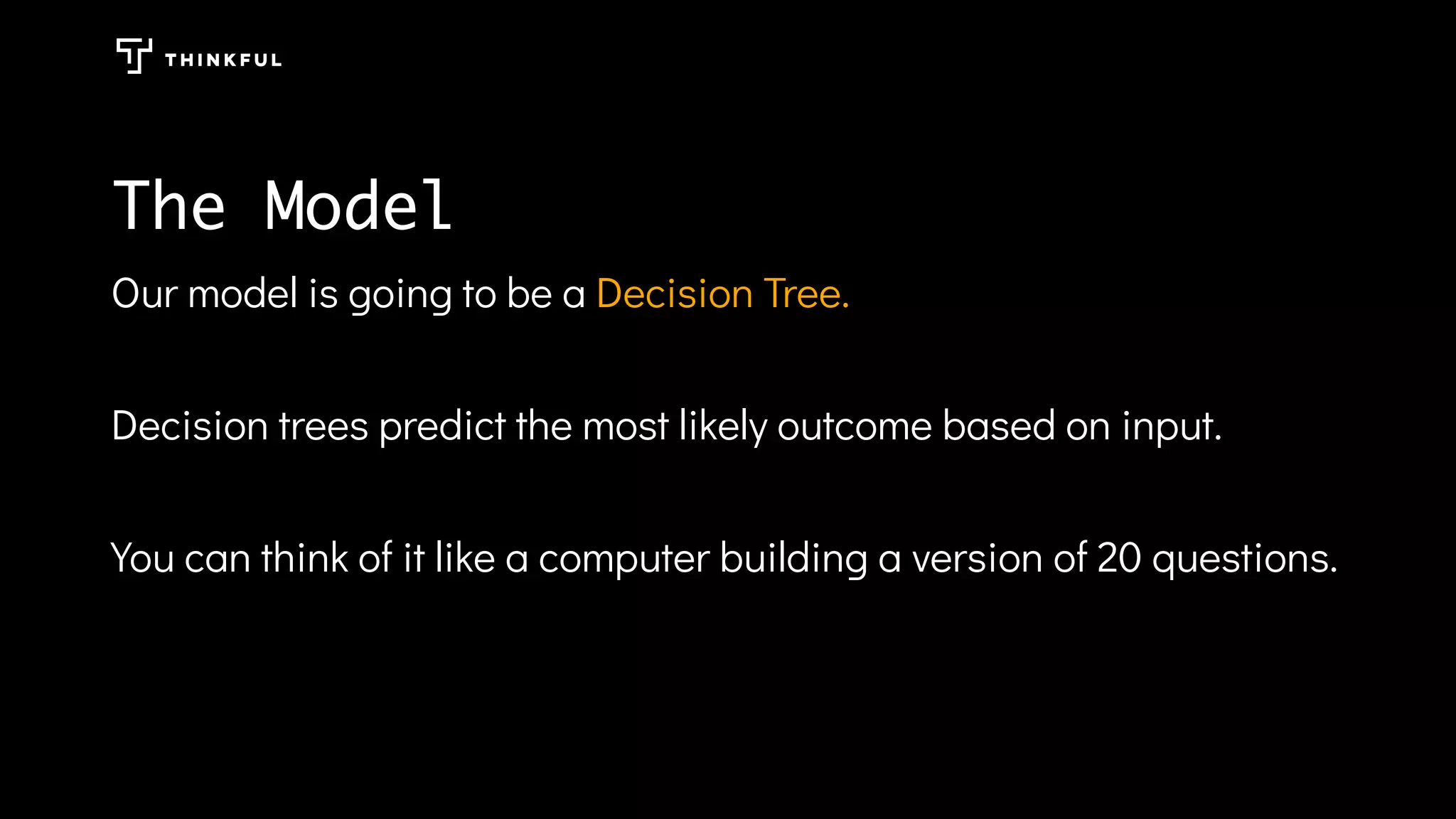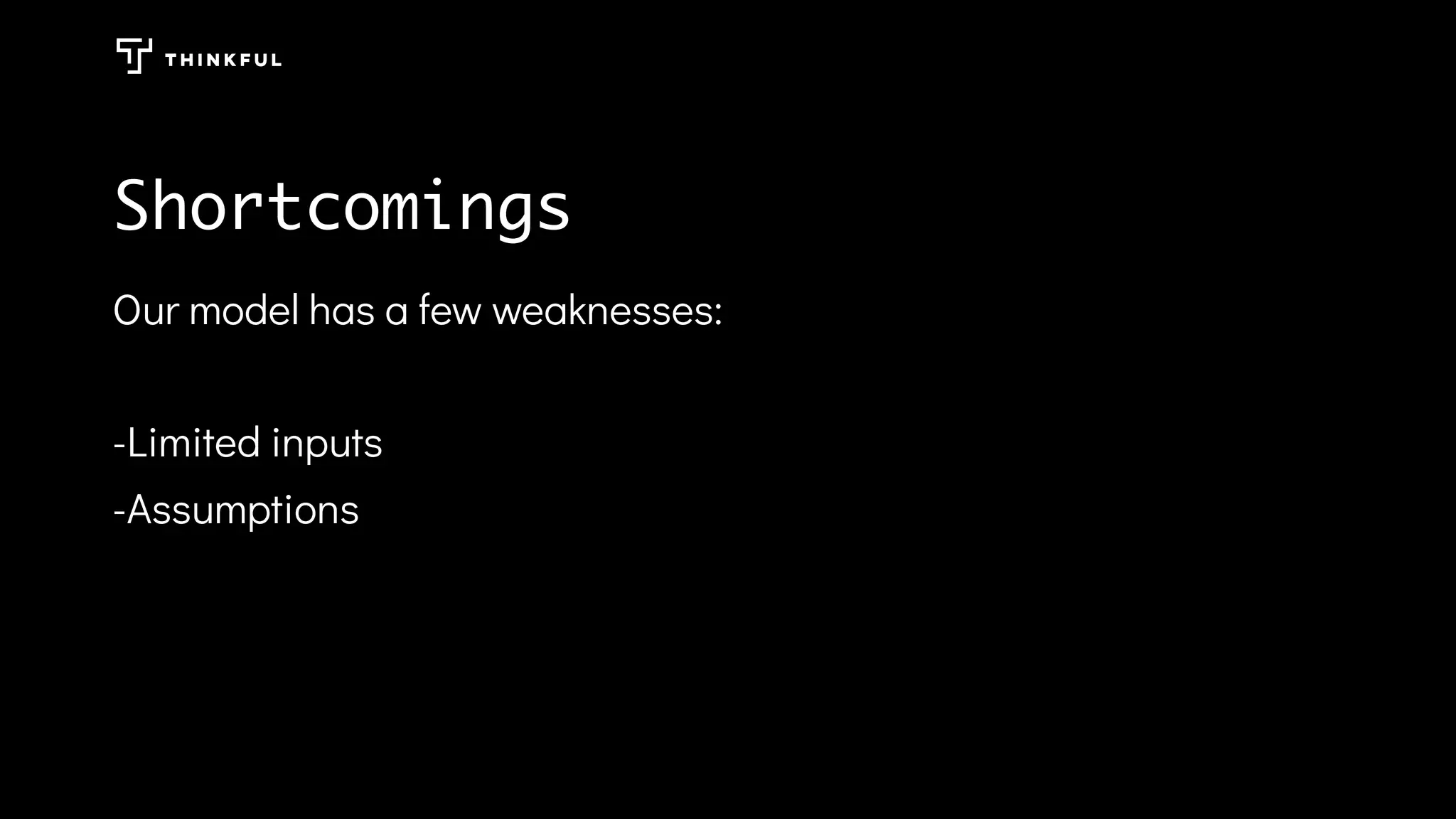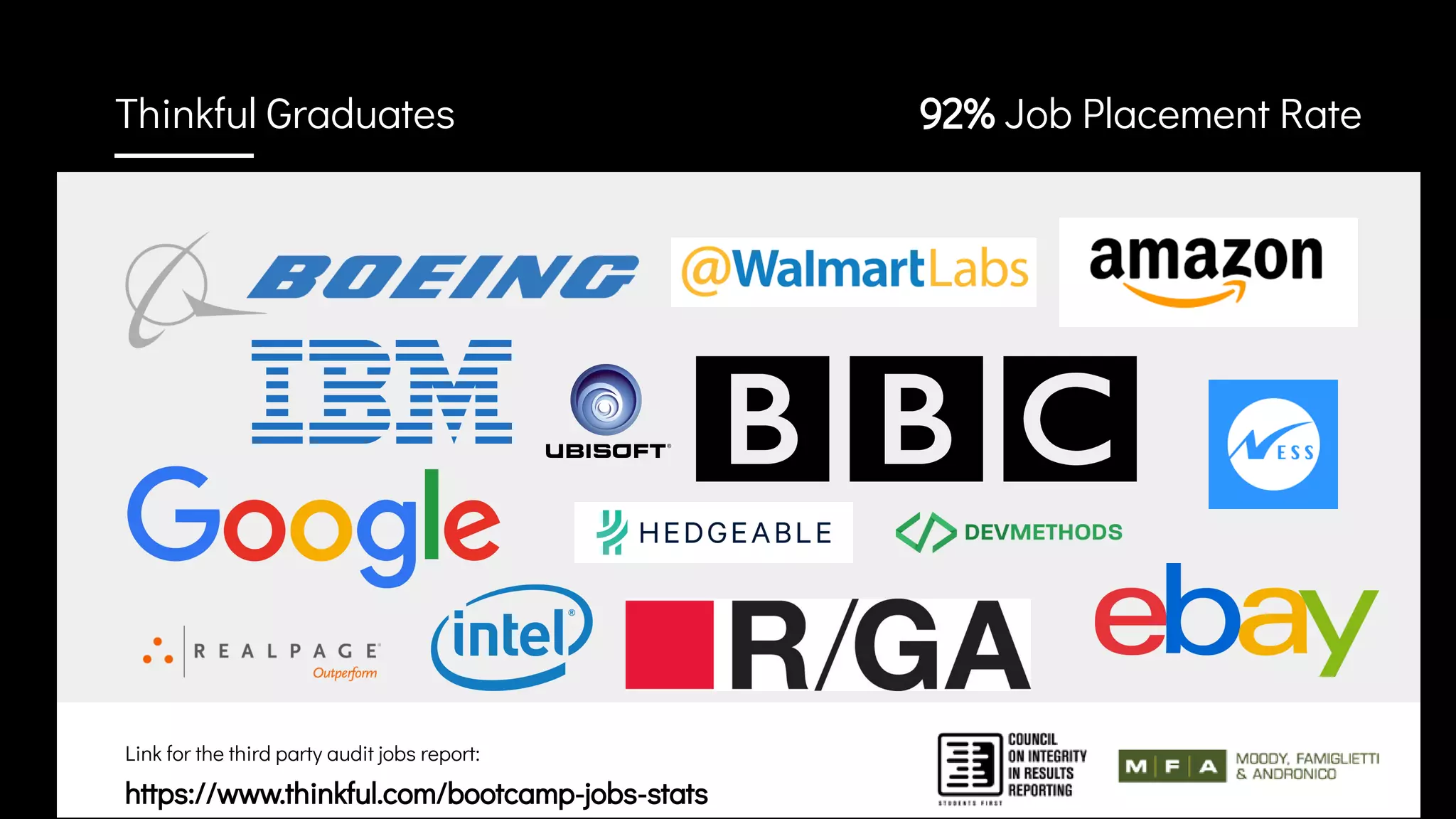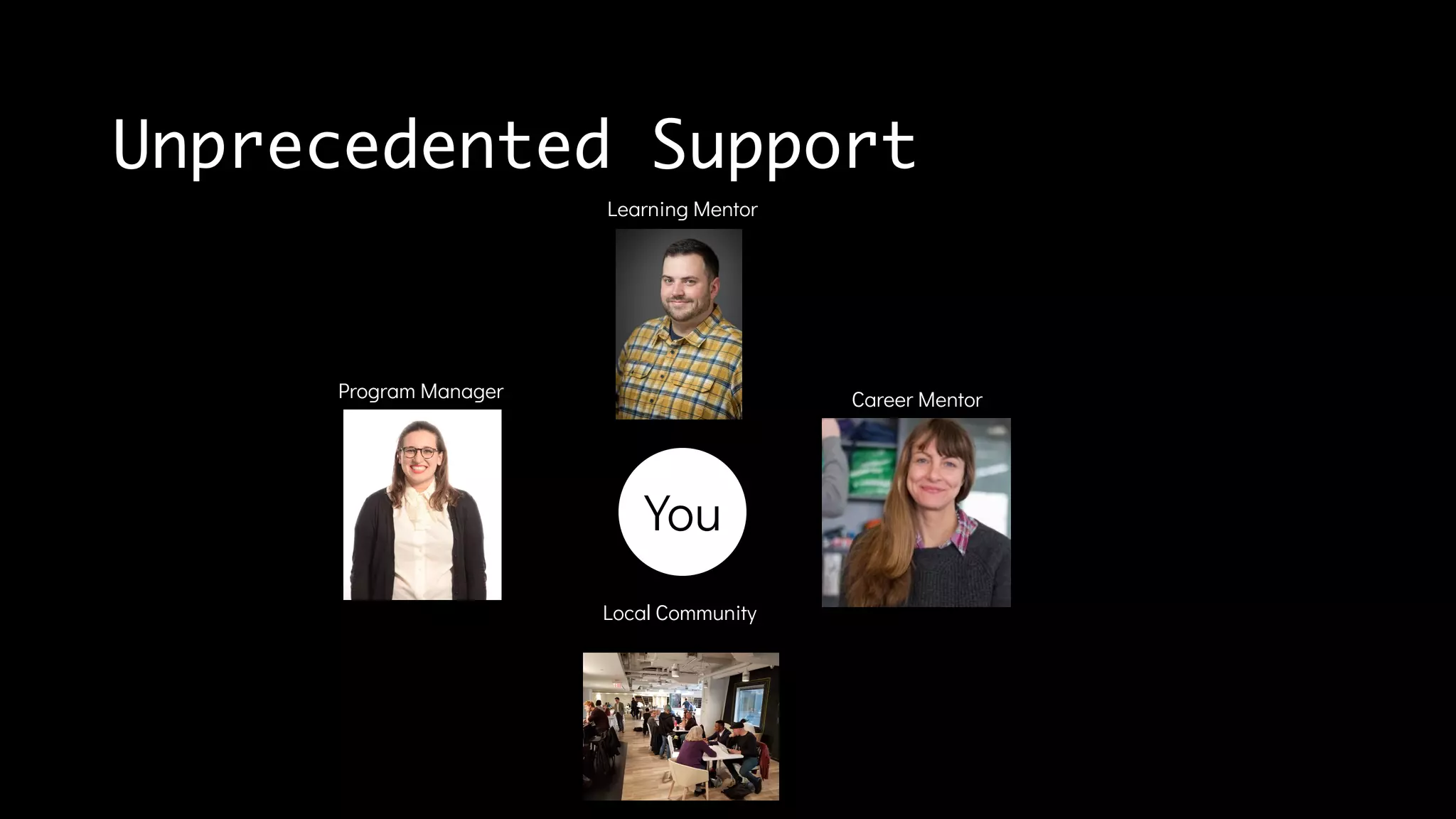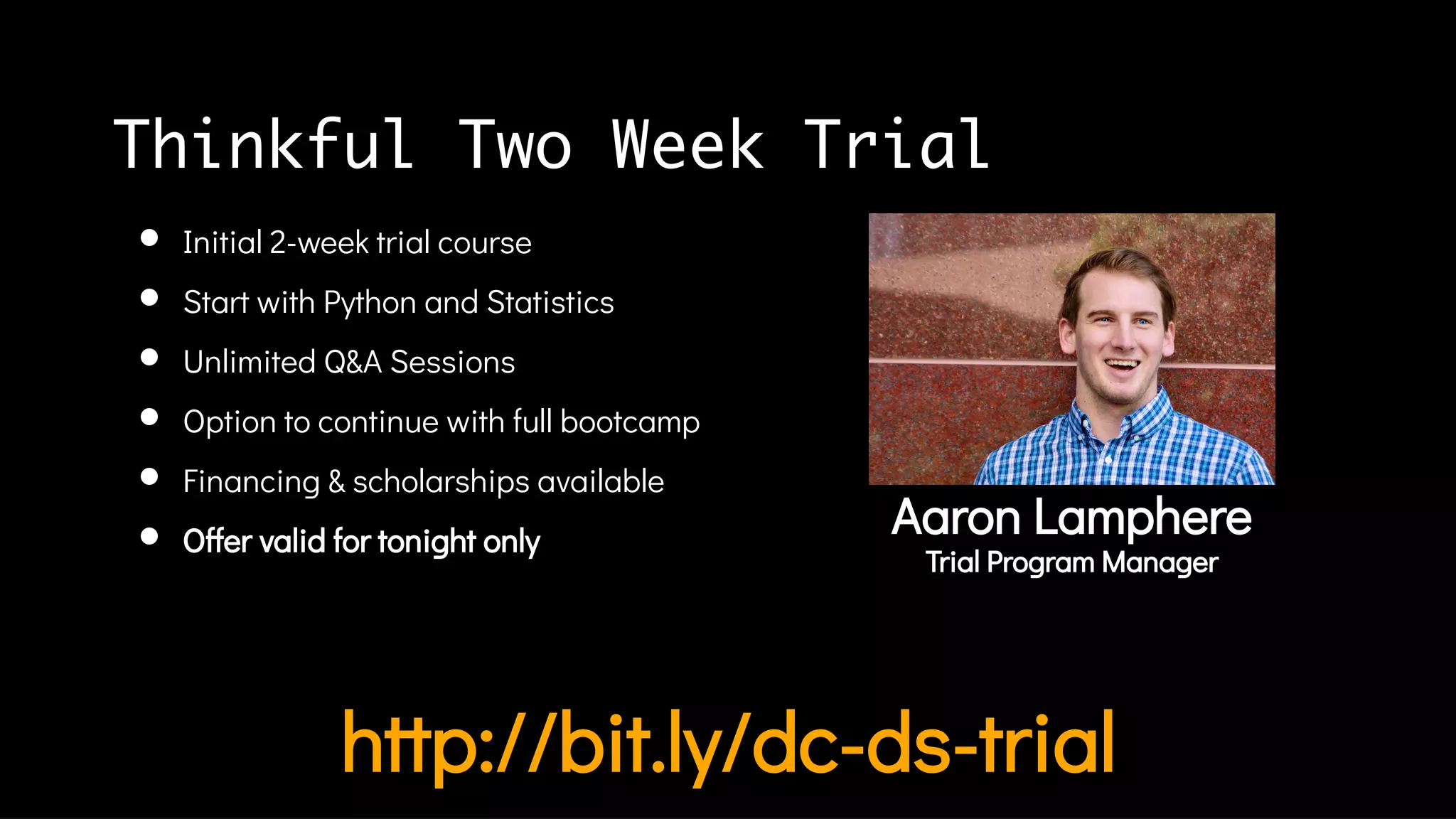This document provides an introduction to data science and Python for data science. It discusses what data science is and why it is important given the rise of big data. It then introduces Python as a programming language that is well-suited for data science. The document demonstrates some basic Python code examples. It also discusses how data science is applied through a case study of how LinkedIn used data science to improve their product. Finally, it describes Thinkful's data science bootcamp program and provides information about a two-week trial course in Python and statistics.

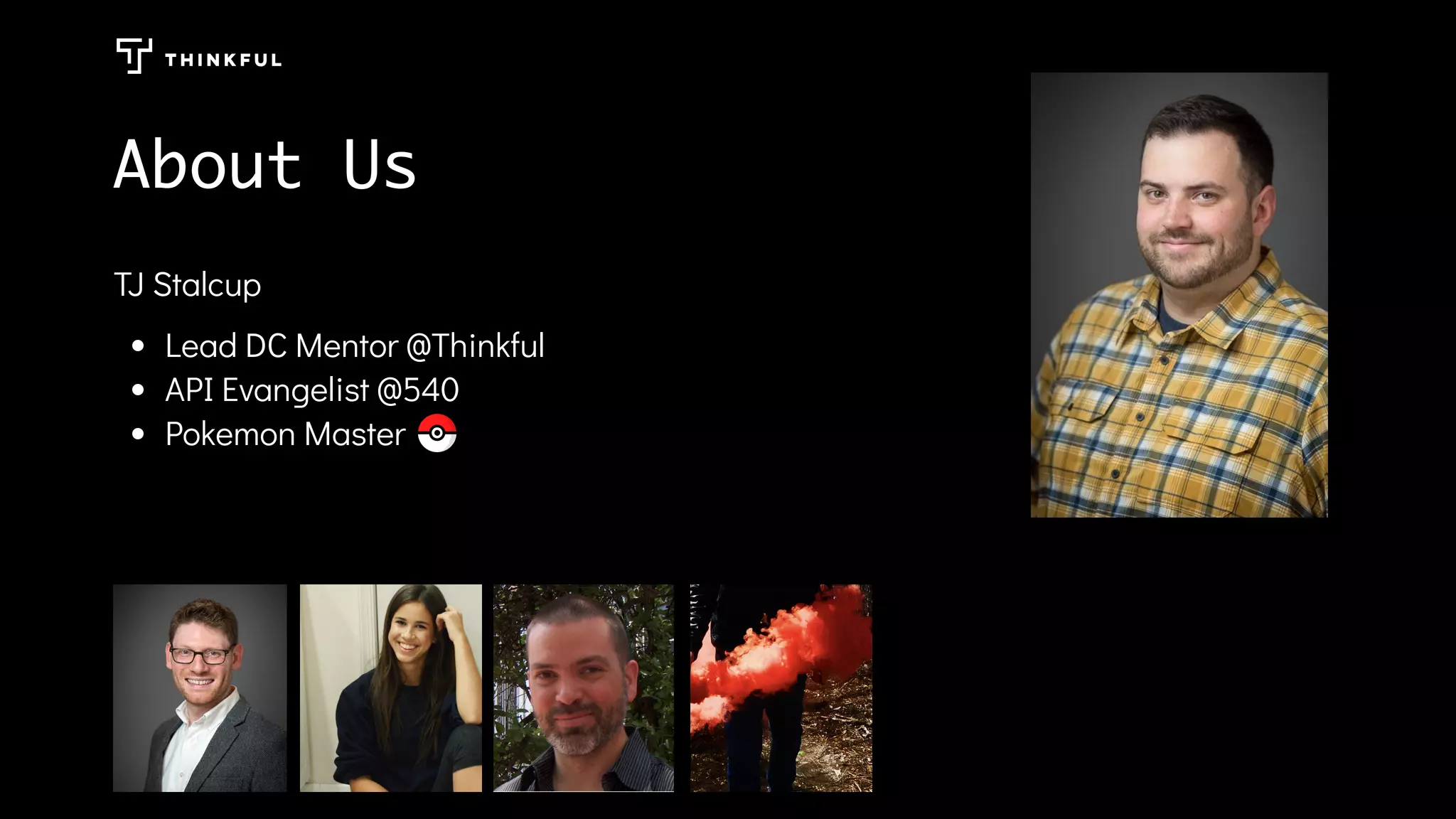
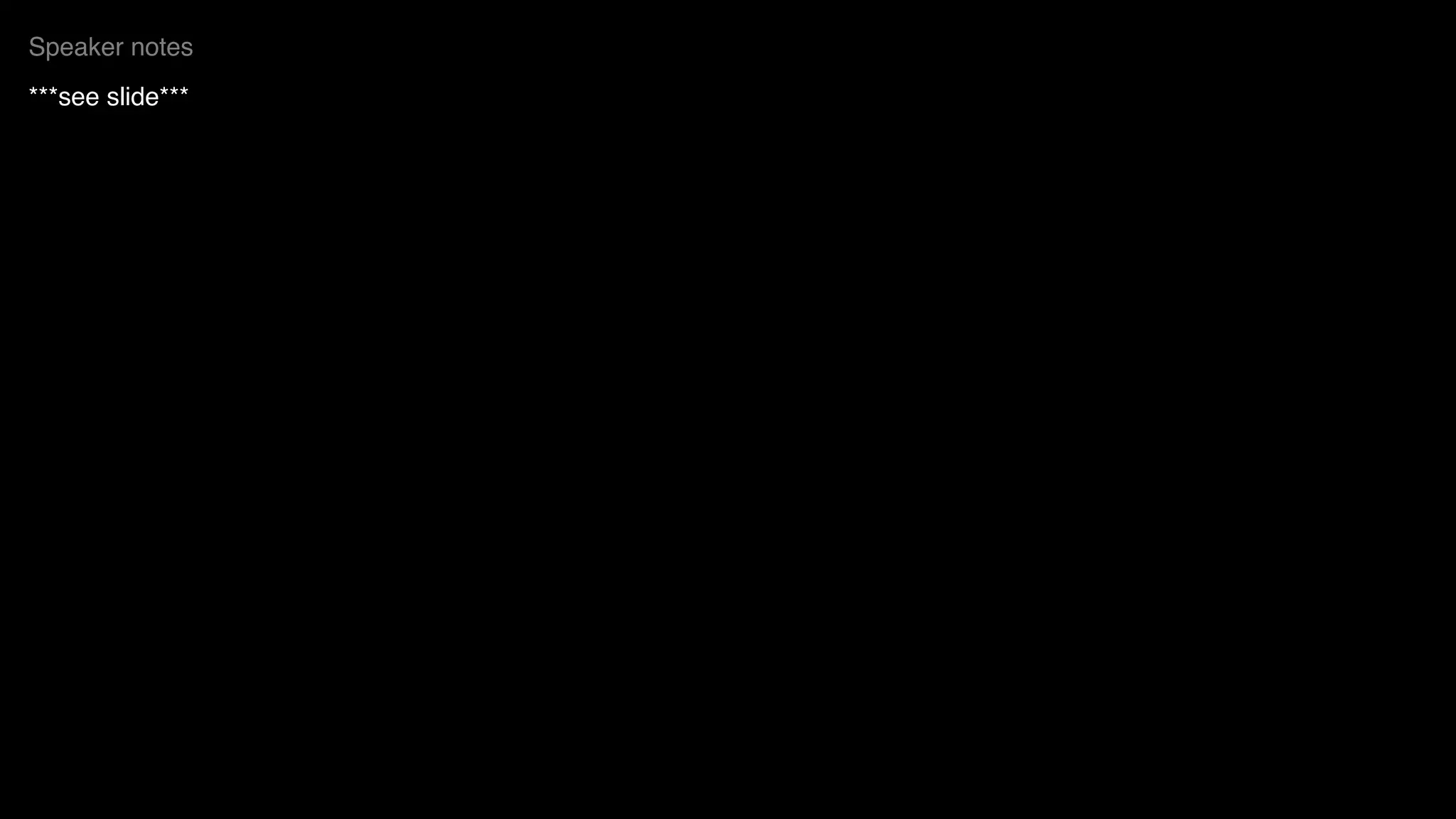

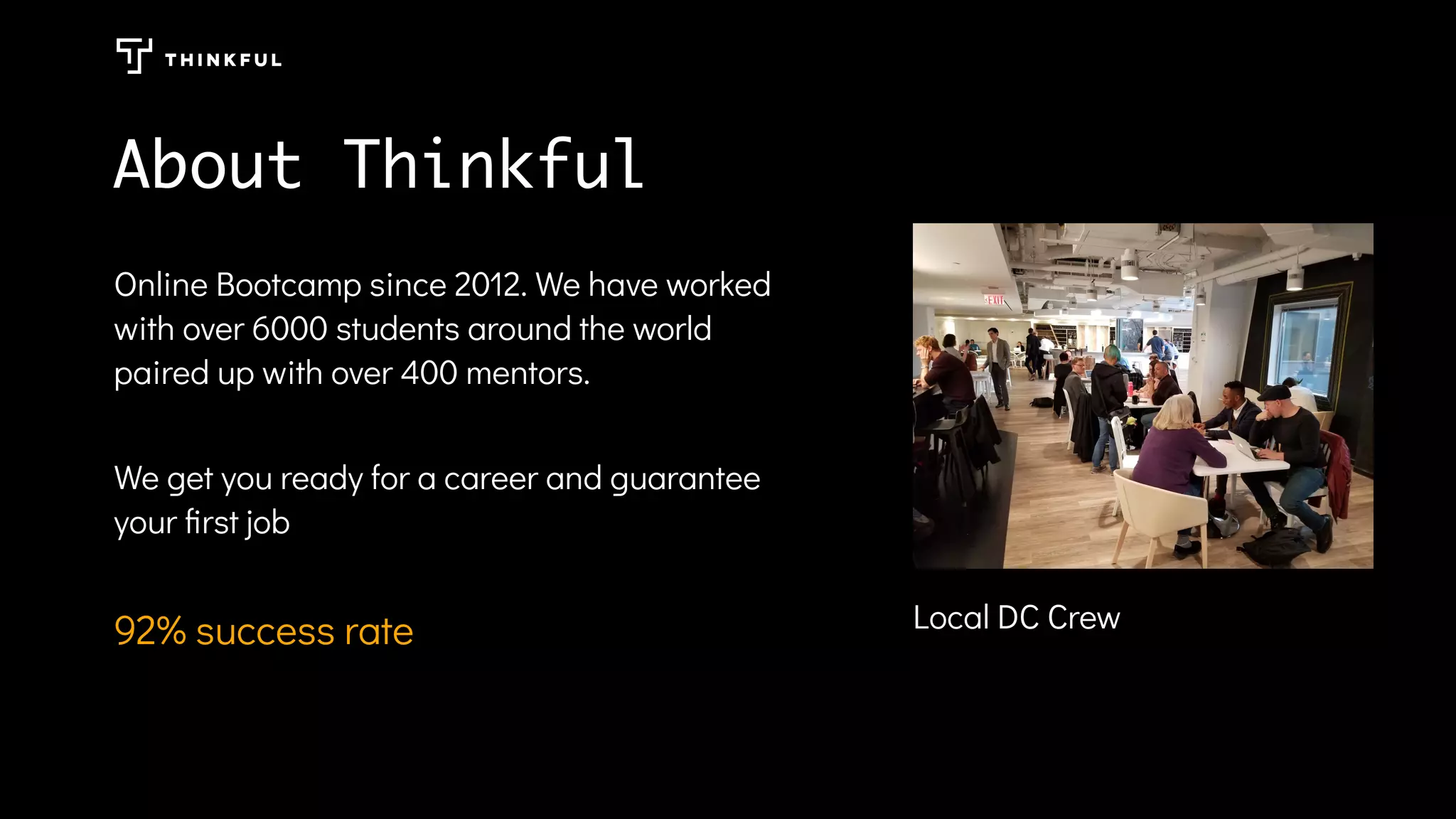

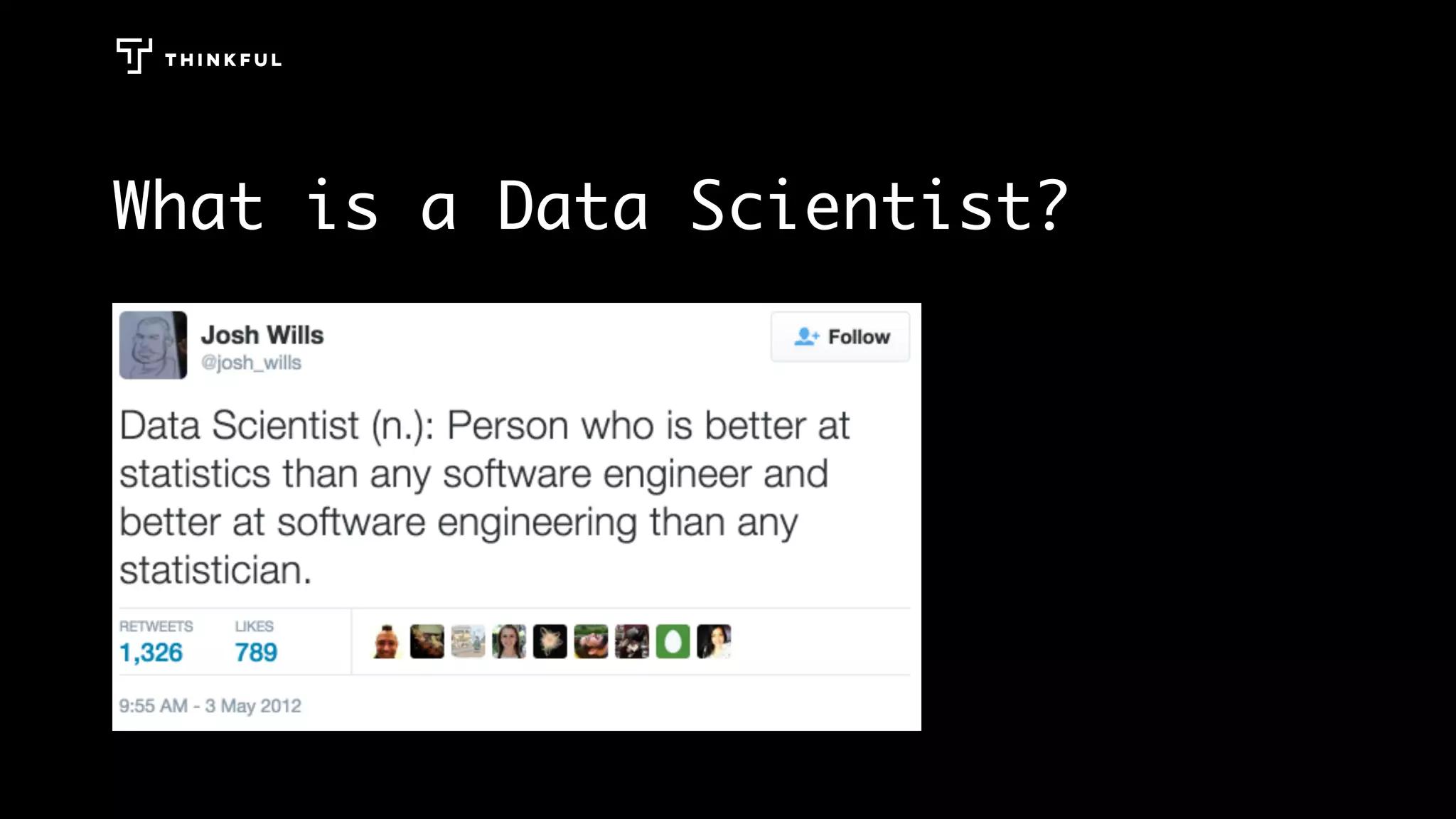
![Example: LinkedIn 2006Example: LinkedIn 2006 “[LinkedIn] was like arriving at a conference reception and realizing you don’t know anyone. So you just stand in the corner sipping your drink—and you probably leave early.” -LinkedIn Manager, June 2006](https://image.slidesharecdn.com/what-is-a-ds-266-340-458-180509154222/75/Intro-to-Python-for-Data-Science-8-2048.jpg)


